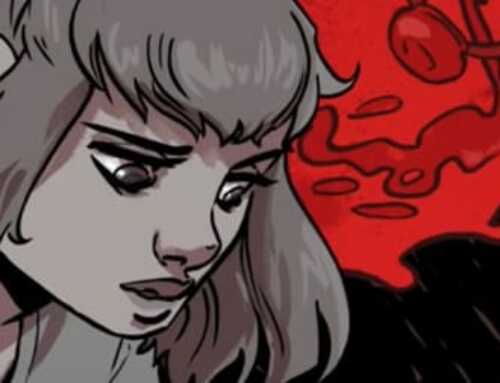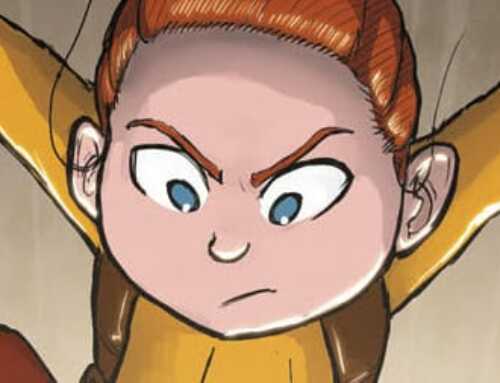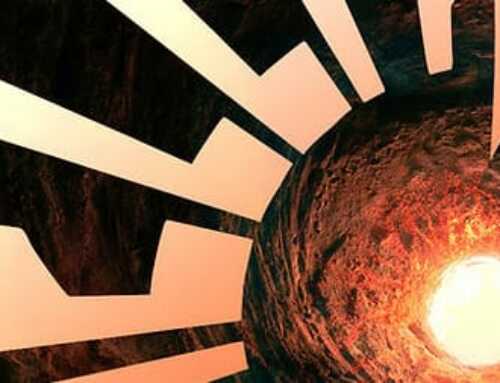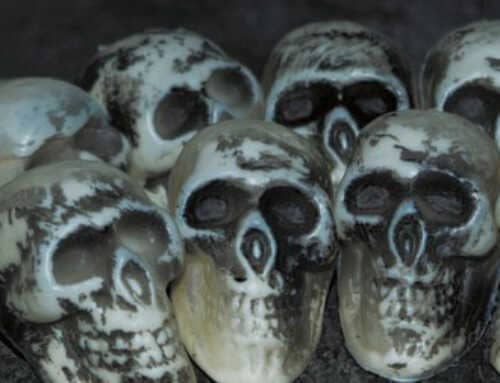The Book of Horror: The Anatomy of Fear in Film is a new film history text which makes good on exactly what the title says– author Matt Glasby goes to great lengths to describe and catalog the scares in what he considers to be the scariest movies of all time. This is a film analysis title for hardcore fans of the genre– expect full spoilers for every entry herein, as the book is less about viewing suggestions (at least for the primary entries) and more about digging deep into what makes movies scary and charting those instances of terror.
of Horror: The Anatomy of Fear in Film is a new film history text which makes good on exactly what the title says– author Matt Glasby goes to great lengths to describe and catalog the scares in what he considers to be the scariest movies of all time. This is a film analysis title for hardcore fans of the genre– expect full spoilers for every entry herein, as the book is less about viewing suggestions (at least for the primary entries) and more about digging deep into what makes movies scary and charting those instances of terror.
In fact, there is a literal chart accompanying each entry which uses a line graph to show the intensity of each movie’s scares and their dispersion throughout the run time. It’s a unique feature and likely my favorite which I’ve seen in this sort of book, as it gives a visual component to the idea of horror movies as thrill rides. While there is likely some discussion to be had about the subjective nature of assigning an intensity value to individual scares it’s abundantly clear that Glasby has taken the effort seriously and maintains internal consistency and sound reasoning throughout.
Also unique in the formating of The Book of Horror is the use of small, unobtrusive graphics throughout the text to describe what sort of scare to expect from each scene, of which there are seven types: dead space, the subliminal, the unexpected, the grotesque, dread, the uncanny, and the unstoppable. These categories are also given a 1-10 ranking at the beginning of each movie’s entry, which is immediately handy in quantifying what kind of fear the film leans into and which are less prevalent. This kind of deep diving and clear, useful format gives The Book of Horror an air of surgical precision that, in my mind, puts it head and shoulders above most synopsis and review collections.
The writing itself is also quite impressive. The book is never dry and manages to impart relevant behind-the-scenes information alongside its intricate dissections and handy suggestions for further viewing. It’s entertaining to read this near single-minded focus on the scares, the most memorable part of any horror movie, and I’d love to see even more analysis from Glasby in this format.
I also really appreciate that this book covers much more modern films than similar titles tend to. Glasby states clearly in the introduction that he wanted to cover movies intentionally built to scare, and touches on the fact that prewar horror simply isn’t scary to a modern audience. Nobody needs a line graph of the scares in Frankenstein, no matter how much we may love the movie, and including choices as recent as 2019 goes a long way to reducing the pretension common to film analysis. Matt Glasby wants scary, not high brow for the sake of it, and The Book of Horror stands apart for that approach.
I’d also be remiss if I didn’t mention the art, courtesy of Barney Bodoano. Every entry has a large illustration inspired by the movie profiled and many are peppered with smaller drawings based on key elements. These are all done in a charcoal sketched style that gorgeously complements and elevates the experience of this book. Take a look at the cover and imagine dozens of pieces in that style– I’d take a stand-alone art book from Bodoano in a heartbeat. If you want to see more of his work head over to his Instagram and have a look.
Overall, this is a novel and fun approach to film analysis that digs into the heart of what makes horror tick. It covers a whopping 34 titles in-depth and features a slew of suggestions for further viewing– you’ve almost certainly seen the majority of the movies discussed, and be prepared for major spoilers on any that you haven’t, but it’s worth it for this unique style of discussion. I ordered a physical copy as soon as I finished it, and if the author and illustrator were to team up to cover more in the future I’d consider it an automatic buy.
Rating 9 out of 10 Jump Scares







